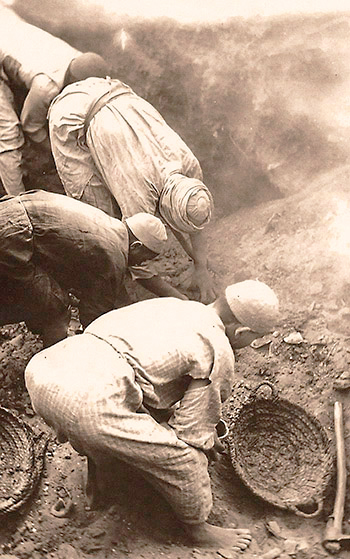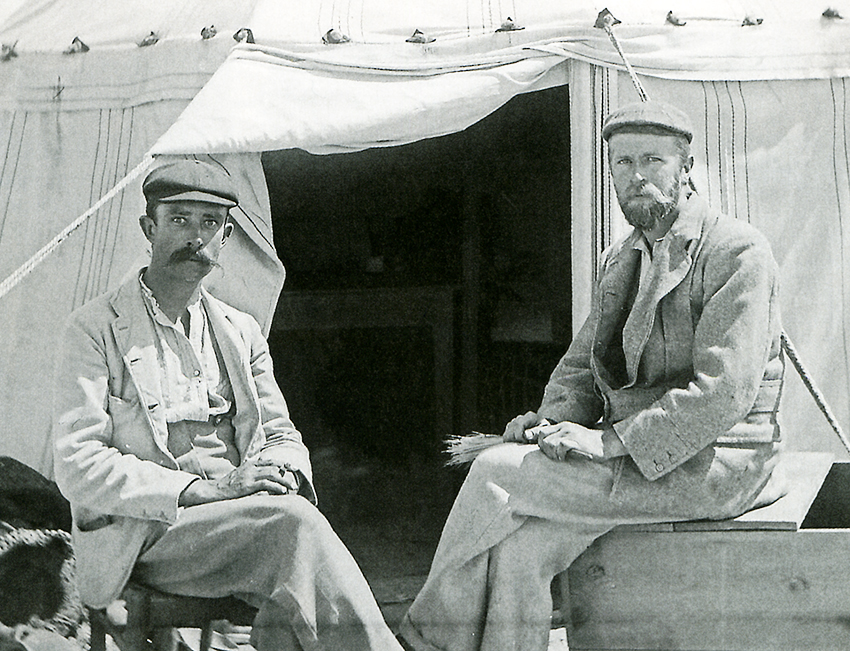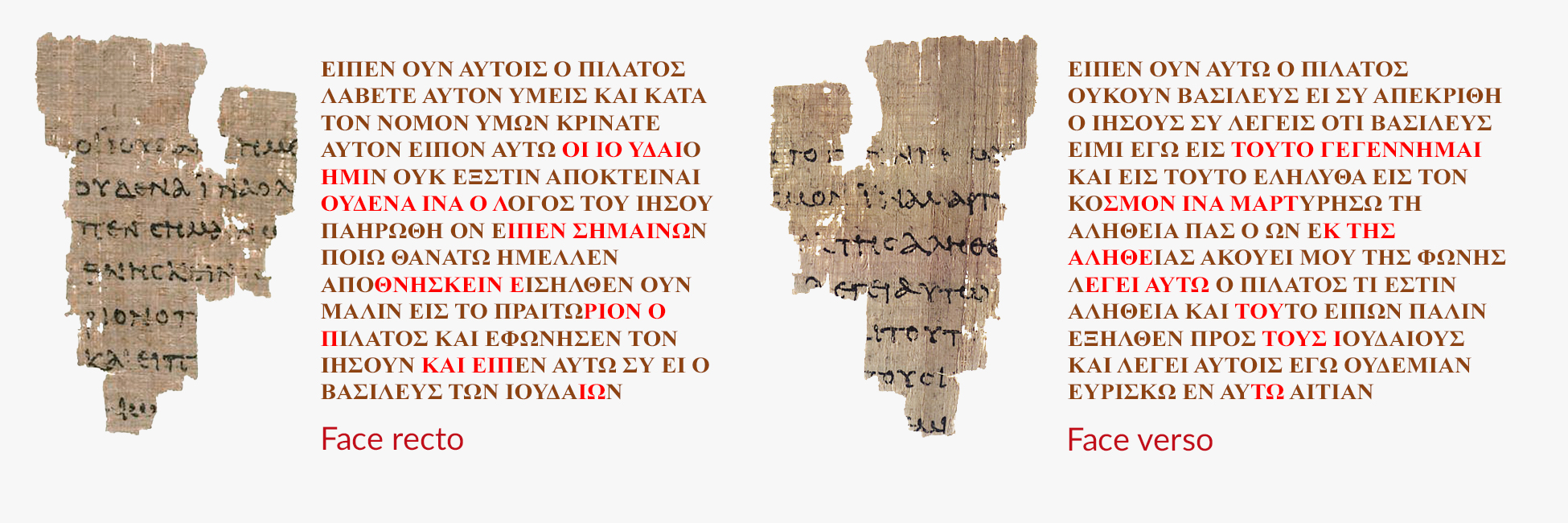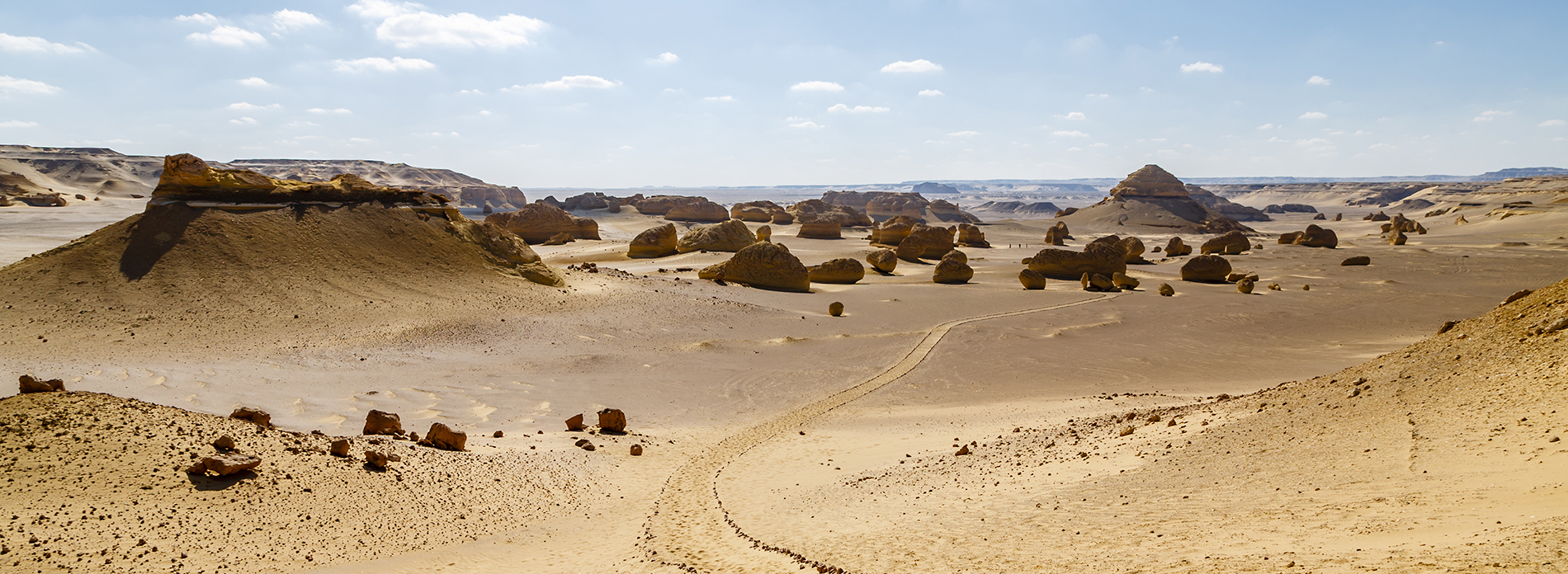
Bible, History, Archaeology
Bible,
History,
Archaeology
Papyrus P52,
a fragment of the Gospel of John
Introduction
Papyrus P52 or P. Rylands GK. 457 is a papyrus fragment preserved at the John Rylands Library from Manchester. It contains two passages from chapter 18 of John's Gospel and dates from the first half of the 2nd century.
 Archaeological digs
Archaeological digs
At the beginning of the 20th century, two young Englishmen, papyrologist Bernard Pyne Grenfell and Egyptologist Arthur Surridge Hunt of Oxford University, were excavating piles of ancient rubble in the Fayum region at the famous site of Oxyrhynchus (Oxyrhynchus) west of the main branch of the Nile when they unearthed hundreds, thousands of ancient papyrus fragments, including legal texts, commercial contracts and literary works, dating from between 250 BC and 700 AD.-C.
Image opposite: from left to right, papyrologist Bernard Grenfell and Egyptologist Arthur Hunt, on their digs. © The Exploration Society. The Imaging Papyri Project, University of Oxford.
Discovering the fragment

He published his first findings in 1936 under the title An Unpublished Fragment of the Fourth Gospel in the John Rylands Library (An unpublished fragment of the fourth Gospel in the John Rylands Library). This is an extract from a codex, not a papyrus scroll, the codex having become the standard medium for Christian texts from the 2nd century onwards. According to specialists, the codex in question must have been about 20 centimetres square and must have contained the entire Gospel of John, some 66 leaves or 132 pages in all.
Image opposite: in 1897, the team of B. Grenfell and A. Hunt uncover nearly 500,000 papyri in a garbage dump. The Exploration Society. The Imaging Papyri Project, University of Oxford.
However, the text of P52 remains too short to allow comparison with later, complete versions of the same Gospel.
The letters in color are visible on the fragment.
The letters in brown are reconstructed. © The Exploration Society. The Imaging Papyri Project, University of Oxford.
Front: John 18:31-33
Then Pilate said to them, "Take him yourselves and judge him according to your law. The Jews said to him, "It is not lawful for us to put anyone to death. This was to fulfill the word Jesus had spoken, indicating the kind of death he was to die. Pilate returned to the Praetorium, called Jesus and said to him: Are you the King of the Jews?
Reverse: John 18:37-38
Pilate said to him, «Are you a king then?» Jesus answered, «As you say, I am a king. If I was born and came into the world, it was to bear witness to the truth. Everyone who is of the truth listens to my voice.» Pilate replied, «What is truth?» With these words, he went out again to meet the Jews and said to them, «For my part, I find no reason in him to condemn him.
Papyrus (Cyperus papyrus L. ) is a member of the Cyperaceae family, widespread in wetlands throughout most of Africa. It was also once found in Egypt on the banks of the Nile and its delta.
This marsh plant can reach several meters in height. It has a triangular stem with star-shaped leaves at the top, forming an umbel. Foliage is jade-green, long, thin and evergreen, with brown spikelets.
Papyrus has long been used as the raw material for a form of paper also known as papyrus, which was the most important writing medium of antiquity. It also had great symbolic and artistic importance in ancient Egypt. DR.
Dating the P52 papyrus fragment and its significance
If the Gospel of John was known in the Nile Valley - around the year 125 according to some specialists - whereas it was written in the Levant, this shows that it was probably composed before the end of the 1st century and distributed in the first half of the 2nd century. P52 thus appears to be the second oldest New Testament extract in our possession (the oldest would be a papyrus of the Gospel of Mark (?), discovered in 2012 in the mask of an Egyptian mummy, which would date from before the year 90?
Fragment P52 can be dated by studying its paleography and epigraphy, comparing the handwriting and form of the letters with those of manuscripts of known date (generally letters or administrative or official documents, as literary texts are generally undated).
Colin H. Roberts makes the comparison with four dated manuscripts of similar handwriting: a document from before Trajan's death 1 in 117; a letter written during the reign of Domitian 2, a petition dating back to 127 3. C. H. Roberts also makes comparisons with two other literary texts: a fragment of the’Iliad estimated to date from around 100 4 and the Egerton papyrus dated around 150, in which he finds most of the characteristics of the P52, albeit to a lesser extent.
On the basis of all these elements, C. H. Roberts proposes an approximate dating of the first half of the 2nd century, an opinion supported by papyrologists Frederic George Kenyon (who notes similarities with another manuscript), P. Flor I, dated 153), W. Shubart and H. I. Bell. In the same year, A. Deissmann independently placed the writing of the fragment in the reign of Trajan (98-117) or Hadrian (117-138). In 1936, Ulrich Wilcken confirmed this dating by comparison with the collection of Apollonius papyri dated between 113 and 120.
The dating of papyrus p52 to the early 2nd century, and the precision with which it was established, have recently been challenged. In 1989, A. Schmidt proposed the year 170, with an uncertainty of 25 years, based on the study of the writing. In 2005, B. Nongbri of Yale University criticized the precision with which P52 had been dated, arguing that paleography, especially in the case of small fragments, is not an exact science, and that the characteristics of P52«s writing can be found in papyri from the early second century, as well as in later manuscripts from the late second century and even the early third century CE. In his opinion, »P52 cannot be used as evidence to settle other debates about the existence (or non-existence) of the Gospel of John in the first half of the second century".
However, dating to the first half of the 2nd century is still generally accepted.
1 - Abb 34
2 - P. Fayum 110 (94), P. London 2078, 81-96.
3 - P. Oslo 22.
4 - P. Berol. 6845.

 Archaeological digs
Archaeological digs

